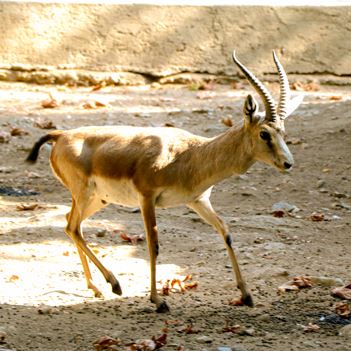Persian name: ahooye irani
English name: Persian Gazelle
Scientific name: Gazella Subgutturosa
Order: Animals
Phylum: Chordata
Class: Mammalia
Order: Artiodactyla
Family: Bovidae
:Habitat
Goitered gazelles inhabit steppe and semi-desert regions. They are mostly seen in sandy and clay deserts, grasslands, and African savannas, as well as in Southwest Asia, Central Asia, and the Indian subcontinent. The largest habitat of the Iranian gazelle is in the Mooteh Wildlife Refuge (Meymeh district, Isfahan province)
:Conservation Status
According to the Department of Environment in Iran, the gazelle is considered a protected species. The International Union for Conservation of Nature (IUCN) classifies this species as Vulnerable (VU), while CITES has not assigned a specific classification for this species
:Diet
Gazelles feed mainly on soft and tender plants and leaves, and they rarely consume dry vegetation
:Threats
Historically, apart from humans, the cheetah has been the main natural predator of this animal, but now cheetahs live only in some parts of Iran. Predation by caracals, hunting dogs, hyenas, jackals, leopards, red foxes, and wolves has also been reported. However, apart from humans, none of these predators significantly affect their population in natural conditions
Gestation Period: 5 to 6 months
Number of Offspring: 2 to 3
Age at Maturity: About 2 years
Lifespan: About 12 years
Body Length: 90-115 cm
Height: 70-80 cm
Body Weight: 20-45 kg
:Interesting Facts
Gazelles can reach speeds of up to 97 km/h
Female gazelles do not have horns, and if they do, the horns are only up to 5 centimeters long
:Description
The Iranian gazelle, along with the chinkara, is one of the two gazelle species found in Iran. The main difference between gazelles and chinkaras is that female gazelles lack horns, while both sexes of chinkara have horns. Chinkaras are also slightly smaller and slimmer and choose drier, more desert-like habitats. During the mating season, the male’s neck swells and becomes noticeably protruded, which is why it is also called the goitered gazelle

